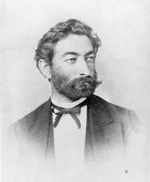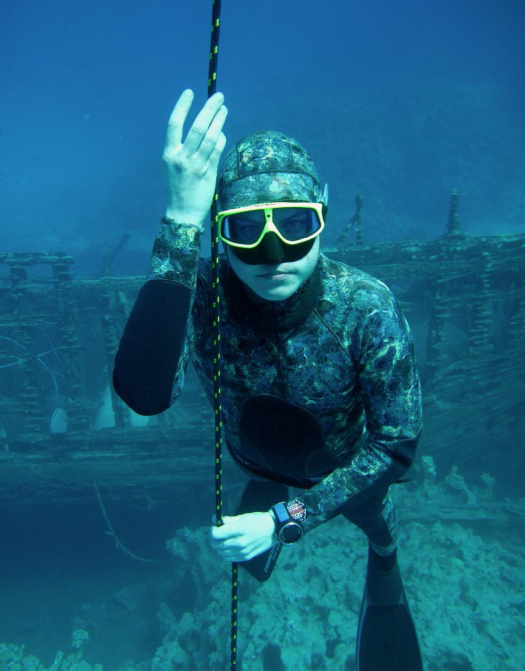|
Holothuria Nobilis
''Holothuria'' (''Microthele'') ''nobilis'', the black teatfish, is a species of sea cucumber in the genus ''Holothuria''. The cucumber is found in the tropical waters of the Indo-pacific ocean. It was first described by Emil Selenka Emil Selenka (27 February, 1842, Braunschweig – 20 February, 1902, Munich) was a German zoologist. He is known for his research on invertebrates and apes and the scientific expeditions he organized to Southeast Asia and South America. Lif ... in 1867. Description The cucumber inhabits shallow waters near islands and reefs. Members of the species are blackish-brown and grey in color, and mature adults can weight between 1.7 and 4 kilograms. Use as food Like the related white teatfish, the black teatfish is part of a commercial fishery across its range and the cucumber is regularly consumed as a food. The species can be collected off the seafloor using diving suits or while skindiving, making the species very vulnerable to overfishing. ... [...More Info...] [...Related Items...] OR: [Wikipedia] [Google] [Baidu] |
Sea Cucumber
Sea cucumbers are echinoderms from the class Holothuroidea (). They are marine animals with a leathery skin and an elongated body containing a single, branched gonad. Sea cucumbers are found on the sea floor worldwide. The number of holothurian () species worldwide is about 1,717, with the greatest number being in the Asia-Pacific region. Many of these are gathered for human consumption and some species are cultivated in aquaculture systems. The harvested product is variously referred to as '' trepang'', ''namako'', ''bêche-de-mer'', or ''balate''. Sea cucumbers serve a useful role in the marine ecosystem as they help recycle nutrients, breaking down detritus and other organic matter, after which bacteria can continue the decomposition process. Like all echinoderms, sea cucumbers have an endoskeleton just below the skin, calcified structures that are usually reduced to isolated microscopic ossicles (or sclerietes) joined by connective tissue. In some species these can sometim ... [...More Info...] [...Related Items...] OR: [Wikipedia] [Google] [Baidu] |
Holothuria
''Holothuria'' is the type genus of the marine animal family Holothuriidae, part of the class Holothuroidea, commonly known as sea cucumbers. Members of the genus are found in coastal waters in tropical and temperate regions. They are soft bodied, limbless invertebrates that dwell on the ocean floor and are usually detritivore. They resemble a cucumber in form. The genus contains some species that are harvested and sold as food. Species The following species are recognised in the genus ''Holothuria'': * Subgenus ''Acanthotrapeza'' ** '' Holothuria coluber'' ** '' Holothuria kubaryi'' ** ''Holothuria pyxis'' ** ''Holothuria tripilata'' * Subgenus ''Cystipus'' ** ''Holothuria casoae'' ** ''Holothuria cubana'' ** ''Holothuria dura'' ** ''Holothuria hartmeyeri'' ** ''Holothuria inhabilis'' ** ''Holothuria jousseaumei'' ** ''Holothuria mammosa'' ** ''Holothuria occidentalis'' ** '' Holothuria pseudofossor'' ** '' Holothuria rigida'' ** ''Holothuria sucosa ... [...More Info...] [...Related Items...] OR: [Wikipedia] [Google] [Baidu] |
Indo-pacific
The Indo-Pacific is a vast biogeographic region of Earth. In a narrow sense, sometimes known as the Indo-West Pacific or Indo-Pacific Asia, it comprises the tropical waters of the Indian Ocean, the western and central Pacific Ocean, and the seas connecting the two in the general area of Indonesia. It does not include the temperate and polar regions of the Indian and Pacific oceans, nor the Tropical Eastern Pacific, along the Pacific coast of the Americas, which is also a distinct marine realm. The term is especially useful in marine biology, ichthyology, and similar fields, since many marine habitats are continuously connected from Madagascar to Japan and Oceania, and a number of species occur over that range, but are not found in the Atlantic Ocean. The region has an exceptionally high species richness, with the world's highest species richness being found in at its heart in the Coral Triangle, and a remarkable gradient of decreasing species richness radiating outward in al ... [...More Info...] [...Related Items...] OR: [Wikipedia] [Google] [Baidu] |
Emil Selenka
Emil Selenka (27 February, 1842, Braunschweig – 20 February, 1902, Munich) was a German zoologist. He is known for his research on invertebrates and apes and the scientific expeditions he organized to Southeast Asia and South America. Life Selenka was the son of bookbinder Johannes Selenka (1801–1871). He studied natural history at the University of Göttingen, and following a graduate dissertation on Holothuroidea, he remained in Göttingen as an assistant to Wilhelm Moritz Keferstein (1833-1870). His research was in this period mainly on the anatomy, taxonomy and embryology of marine invertebrates, especially organisms from the phylum Echinodermata. In 1868 he became a professor of zoology and comparative anatomy at the University of Leiden, followed by a professorship at the University of Erlangen in 1874. In 1895 he was given an honorary professorship at the University of Munich. He was co-founder of the journal ''Biologisches Zentralblatt''. His later research ... [...More Info...] [...Related Items...] OR: [Wikipedia] [Google] [Baidu] |
White Teatfish
''Holothuria (Microthele) fuscogilva'', also known as the white teatfish or white teeth, is a species of sea cucumber in the genus ''Holothuria'', subgenus ''Microthele''. The cucumber is found in the tropical waters of the Indo-Pacific ocean. The species is vulnerable to over-exploitation from commercial fishing. It was first formally named by Gustave Cherbonnier in 1980. Distribution and habitat ''Holothuria fuscogilva'' are found in the Indo-Pacific ocean in shallow waters near islands and around coral reefs. Juvenile cucumbers live in shallower waters (such as inter-tidal zones) and then migrate to deeper waters as they mature. Spawning occurs during the Northeastern Monsoon season (October to December), and the species reaches sexually maturity relatively late. Description Adult cucumbers weigh between 2.4 and 4 kilograms. They are oval in shape and have a firm texture. This species cucumber has lateral papillae (teats) which are often buried in the sand. Use ''Holothuria ... [...More Info...] [...Related Items...] OR: [Wikipedia] [Google] [Baidu] |
Sea Cucumber As Food
Sea cucumbers are marine animals of the class Holothuroidea. They can be used as food, in fresh or dried form, in various cuisines. In some cultural contexts the sea cucumber is thought to have medicinal value. The creature and the food product are commonly known as ''bêche-de-mer'' in French, from Portuguese ''bicho do mar'' (literally "sea animal"), ''trepang'' (or ''trīpang'') in Indonesian, ''namako'' in Japanese, ''balatan'' in Tagalog, ''loli'' in Hawaiian and ''deniz patlıcanı'' (sea eggplant) in Turkish. In Malay, it is known as the '' gamat''.Alessandro Lovatelli, C. Conand, Food and Agriculture Organization of the United Nations. ''Advances in sea cucumber aquaculture and management'': ''Volume 463 of FAO fisheries technical paper'' United Nations Food & Agriculture Org., 2004. . 425 pages: 58 Most cultures in East and Southeast Asia regard sea cucumbers as a delicacy. A number of dishes are made with sea cucumber, and in most dishes it has a slippery texture. C ... [...More Info...] [...Related Items...] OR: [Wikipedia] [Google] [Baidu] |
Freediving
Freediving, free-diving, free diving, breath-hold diving, or skin diving is a form of underwater diving that relies on breath-holding until resurfacing rather than the use of breathing apparatus such as scuba gear. Besides the limits of breath-hold, immersion in water and exposure to high ambient pressure also have physiological effects that limit the depths and duration possible in freediving. Examples of freediving activities are traditional fishing techniques, competitive and non-competitive freediving, competitive and non-competitive spearfishing and freediving photography, synchronised swimming, underwater football, underwater rugby, underwater hockey, underwater target shooting and snorkeling. There are also a range of "competitive apnea" disciplines; in which competitors attempt to attain great depths, times, or distances on a single breath. Historically, the term ''free diving'' was also used to refer to scuba diving, due to the freedom of movement compared with surfa ... [...More Info...] [...Related Items...] OR: [Wikipedia] [Google] [Baidu] |
Holothuriidae
Holothuriidae is a family of sea cucumbers, a type of echinoderm. Description Members of the family Holothuriidae have thick fleshy bodies and several rows of tube feet which are used for moving around and for adhering to the surface. The body is often covered with blunt projections known as papillae. Many of the members of this family are able to eject a mass of fine sticky threads known as cuvierian tubules to distract predators, or even turn their viscera inside out. For the taxonomic determination, the genera '' Actinopyga'' and '' Bohadschia'' have their spicules exclusively shaped like sticks, and the genera ''Holothuria'' and '' Labidodemas'' never have theirs shaped like tables. '' Actinopyga'' is also equipped with anal teeth (modified podia), and never throw out Cuvieran tubules, just like '' Pearsonothuria''. Members of this family occur throughout the oceans of the world at low to middle latitudes. They often live in coral reefs and nearby sandy habitat types, and a ... [...More Info...] [...Related Items...] OR: [Wikipedia] [Google] [Baidu] |



